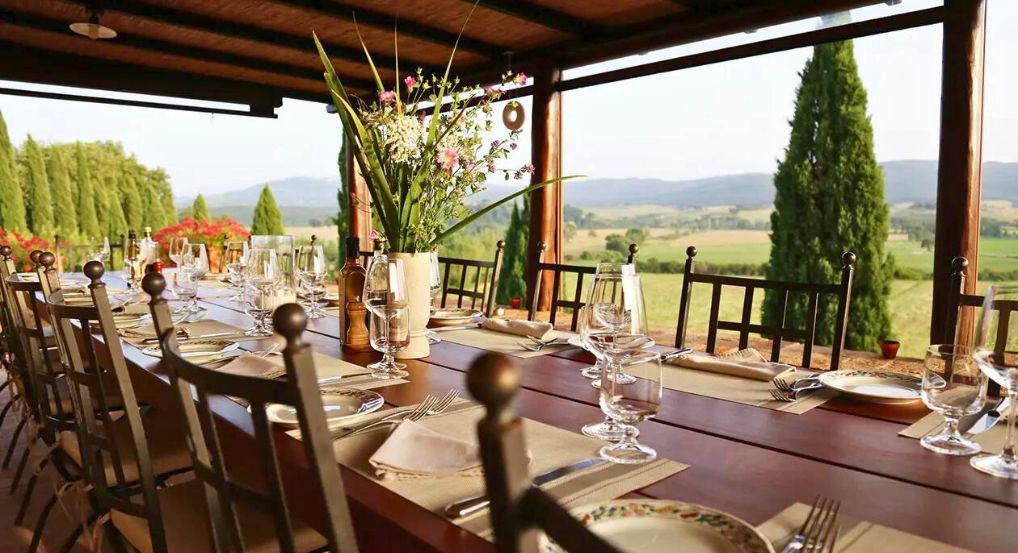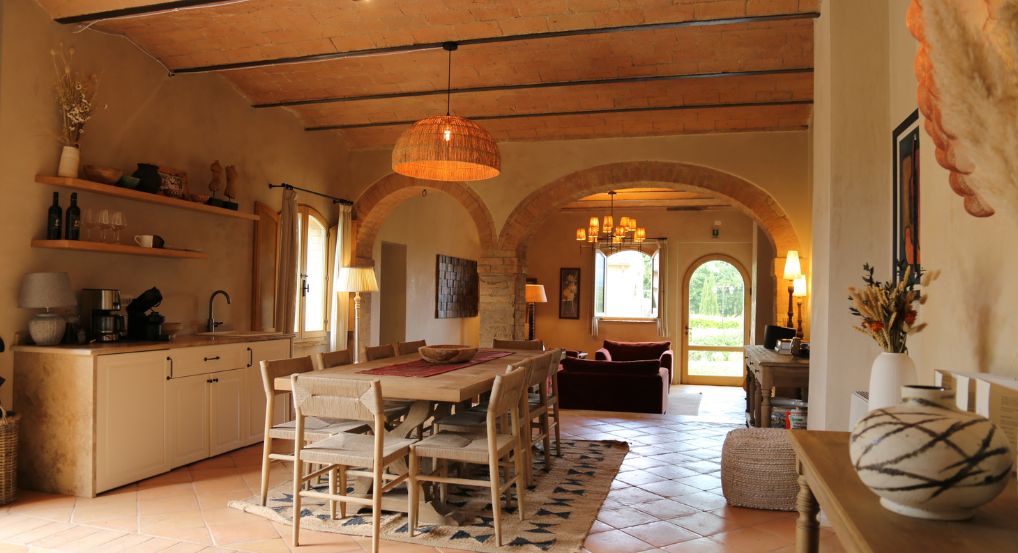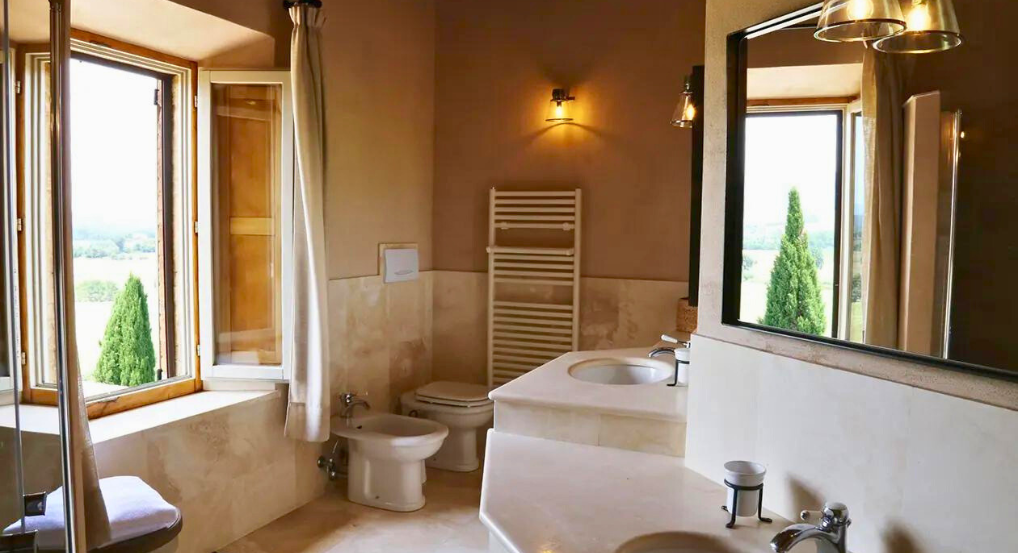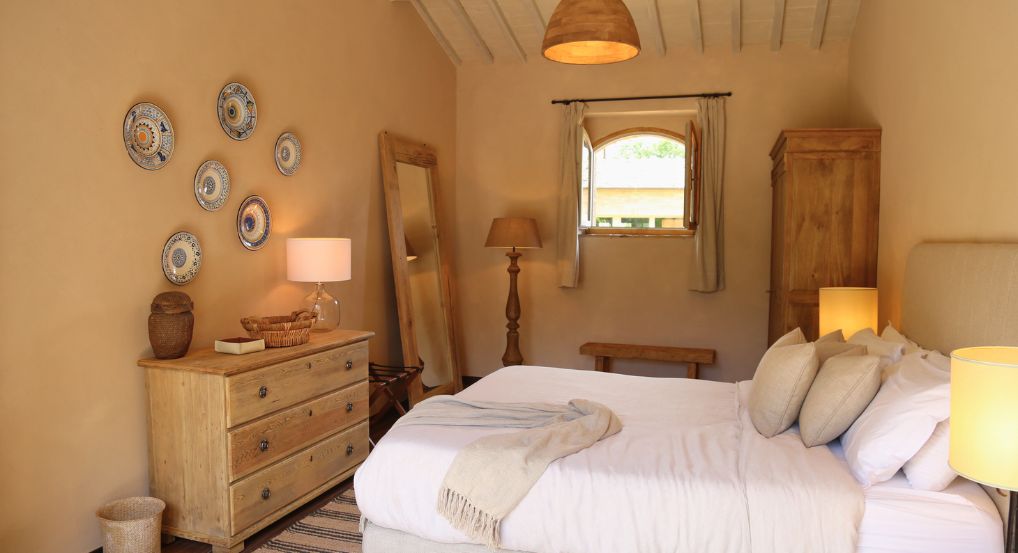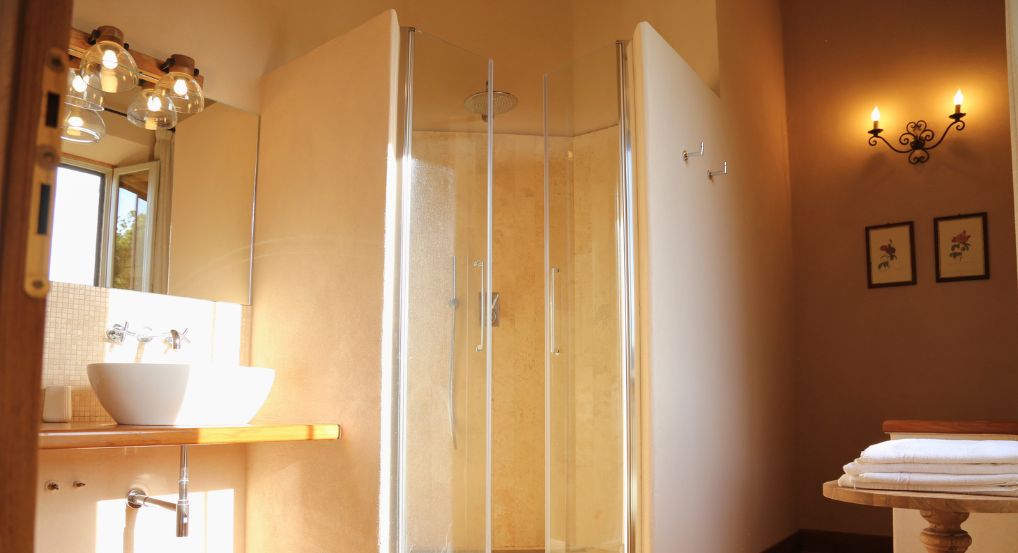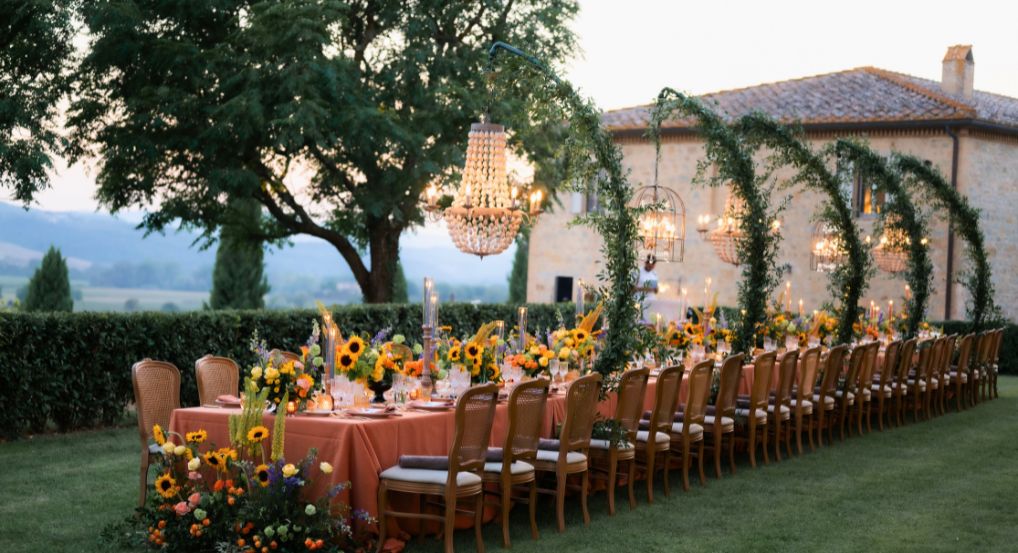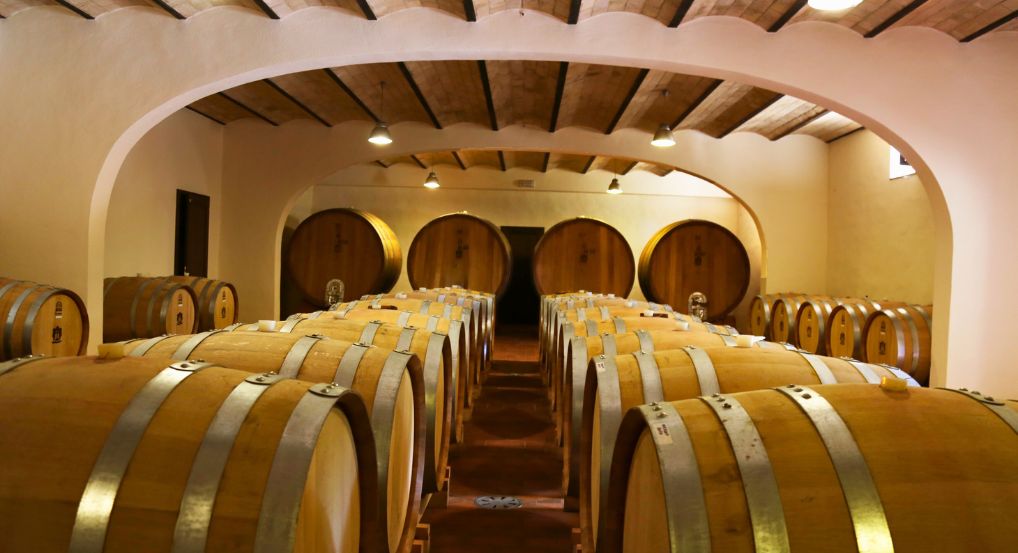• Montalcino. To the south of Siena is a classic fairytale hilltop town, set within a full circle of fortified walls and watched over by a mighty castle of medieval perfection. Montalcino, west of Pienza, is a beautiful village immersed in the breathtaking Val d’Orcia Natural Park, renowned all over the world for the production of its precious Brunello red wine. The town has scarcely changed in appearance since the 16th century. Once you get up to the town, a magnificent spectacle unfolds for your eyes: rolling sunny hills dotted with yellow and red flowers, ancient oak trees, picturesque olive groves, scenic country roads winding through perfect vineyards and isolated cypress trees atop hills. The town has been made incredibly rich and famous by its Brunello wine, one of the world’s best and most appreciated Italian wines. Montalcino was already well-known for its fine red wines during the 15th century. However, the precious formula of the fantastic Brunello was invented in 1888 by Ferruccio Biondi Santi, who first had the idea of leaving out the grapes used in the traditional Chianti recipe, such as Canaiolo and Colorino, and using only the Sangiovese variety.
• San Quirico. In the heart of the Val d’Orcia, nestled amidst hills of incomparable beauty, sits an ancient village that probably dates back to the Etruscan era, immersed in a landscape dotted with olive groves, vineyards and oak forests. The territory is one to be admired for its perfect balance honed over the years between the natural landscape and man-made marvels. San Quirico d’Orcia, with its splendid fortresses and medieval parish churches, is in this area so famous for its stunning landscapes – one of those places that must absolutely be visited if you’re in this enchanted territory. Among the must-see attractions are the parish church of San Quirico, a Romanesque building that preserves an altarpiece painted by Sano di Pietro, a 15th-century painter of the Sienese school, and, in the town’s central piazza, the Church of San Francesco, whose interior contains several Gothic elements. The center of the town is particularly picturesque thanks to the inviting paved streets and beautiful stone fountains. Something that stands out in the history and, partly, the appearance of the town is the fact that it sits along the Via Francigena, whose importance for San Quirico is evidenced by the presence of the Ospedale della Scala, where pilgrims were once offered refuge. Visitors won’t be disappointed should they stop by the ruins of the Cassero tower and the Horti Leonini, a typical 15th-centuy garden that can be accessed through an entrance between the wall and the piazza.
• Bagno Vignoni, the thermal station that has been known since Medieval times for its celebrated piazza d’acqua. Bagno Vignoni is a small spa of medieval origin, although it was already know in Roman times. Bagno Vignoni sits on a hill above the Val d’Orcia just south of San Quirico. The fascinating tiny village is clustered around a large pool closed on three sides by the town walls, with water that flows at 52°. The pool essentially fills the square, surrounded by a 1.5 metre-high wall on three sides. All around are buildings designed by Bernardo Rossellino in honor of Pope Pius II, while on the fourth side is the archway from which St. Catherine of Siena admired the view. This place also fascinated Lorenzo il Magnifico of the Medici family, who spent part of 1490 here. The old Francigena road passes near the village, and as the diary written in 1581 by Michel de Montagne confirms, piligrims and travelers heading toward Rome frequently stopped in Bagno Vignoni to find comfort in its hot springs. Nowadays Bagno Vignoni is well-known and appreciated the world over as an esteemed thermal locality situated in the heart of the Val d’Orcia.
• Pienza is a tiny village in the beautiful Val d’Orcia we highly recommend you visit. The village is located about 20 kilometers east of Montalcino and a few kilometers to the west of Montepulciano amidst gentle undulating hills and wonderful natural landscapes. Pienza enjoys a strategic position standing high atop a hill, dominating all the Orcia Valley with extraordinary views. This charming village is widely known as the “ideal city of the Renaissance”, the creation of the great humanist Enea Silvio Piccolomini who later became Pope Pius II. Piccolomini had the money and influence to transform his birthplace village, the humble Corsignano, into what he considered the Utopian city should be, exemplifying the principles and philosophy of classical times and of
• The Abbey of Sant’Antimo, located 9km from Montalcino in Tuscany, is one of the most beautiful of all Romanesque churches in Italy. Local legend attributes its foundation to Charlemagne in the 8th century AD, a miracle that helped cure his army of a plague and a promise to build an abbey on the land where they were saved. Recorded history, however, has a different tale to tell and puts the foundation further back, to the Longobards and the Monastery of St. Savior. The site also is thought to have originally been the location of an ancient Roman villa. The existence of Sant’Antimo, itself, is recorded since at least the 9th century. By the 12th century, this abbey had become rich and the most powerful monastic landowner and foundation in Tuscany. Located along the Via Francigena, the pilgrims’ route to Rome, it benefited from the gifts of pilgrims and the faithful. It even owned large portions of land stretching from Lucca, in the north of Tuscany, to Orbetello, in the south. These times of great property did not last and by the 19th century it was in dire need of care and repair. When it came into the possession of the State, there was a long period of physical restoration that, ultimately, saved the whole building. Begun in 1872 and finished in 1895, it allowed for the current appearance of the abbey.
• Radicofani. On a hill at the southern border of the Val d’Orcia sits one of the most spectacular fortresses in Tuscany, for centuries one of the most important strongholds in Italy: Radicofani. The castle can be seen from dozens of miles away, and it appears to dominate the village, where it guarded the border between the Grand Duchy of Tuscany and the Papal States for hundreds of years. Built just after the year 1000, the fortress was renovated many times over the centuries, partially knocked down in the 1700s before being officially restored in the 1900s. From the balcony at the top of the tower, you can enjoy a vastly extensive view, from the entire Val d’Orcia to Monte Amiata, the Apennines and the Trasimeno and Bolsena lakes.
• Siena is the capital of the province of Siena. The historic centre of Siena has been declared by UNESCO a World Heritage Site. It is one of the nation’s most visited tourist attractions, with over 163,000 international arrivals in 2008. Siena is likely Italy’s loveliest medieval city, and a trip worth making even if you are in Tuscany for just a few days. Siena’s heart is its central piazza known as Il Campo, known worldwide for the famous Palio run here, a horse race run around the piazza two times every summer. Mo- vie audiences worldwide can see Siena and the Palio in the James Bond movie, Quantum of Solace.


